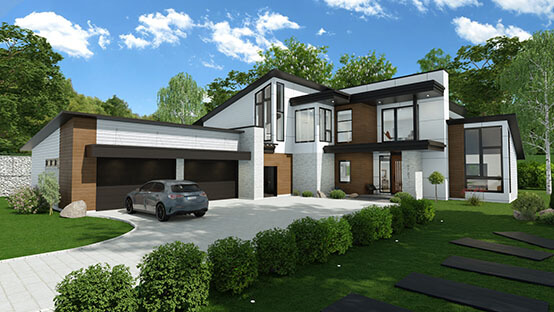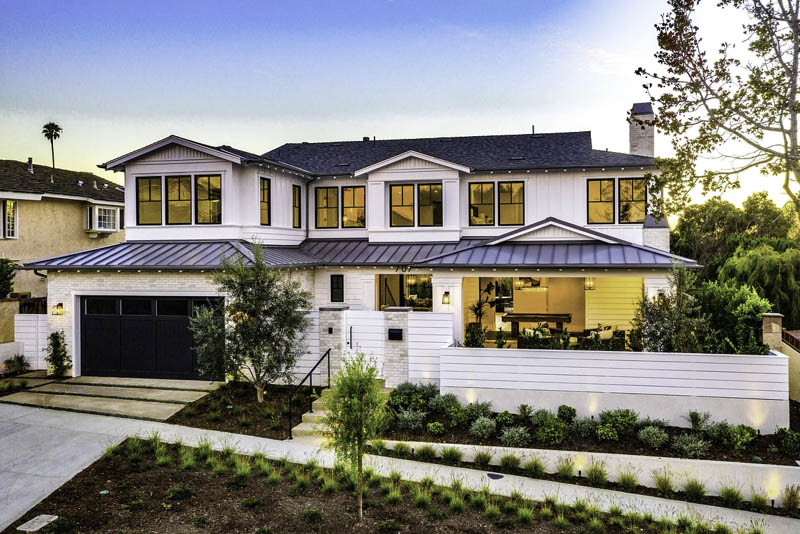How Residential Architects Produce Personalized Residences for each Lifestyle
The process whereby domestic designers design personalized homes is a nuanced interaction of understanding client requirements and translating those understandings into functional home. Through thorough examinations and making use of design tools, architects record the essence of their clients' way of livings, ensuring that each home reflects personal values and aspirations. This joint strategy prolongs beyond initial ideas, including lasting practices and innovative modern technologies to enhance daily living. As we discover the elaborate steps associated with this transformative procedure, a deeper gratitude for the designer's function fit one-of-a-kind settings begins to emerge.
Comprehending Client Requirements

Efficient interaction is vital in this procedure. Architects ought to motivate customers to articulate their way of lives, family dynamics, and future aspirations, making certain that the style reflects their one-of-a-kind identity. By utilizing tools such as surveys, meetings, and aesthetic surveys, designers can gather useful insights right into the customer's vision.
Moreover, recognizing the context in which a home will exist is crucial. Architects should think about factors such as the website features, local environment, and social influences that can influence the design. This holistic approach enables the development of rooms that are not just aesthetically pleasing yet lasting and also sensible.
Eventually, a deep understanding of client requires enables designers to develop customized homes that improve the high quality of life for their owners, cultivating a sense of belonging and convenience within their living environments.
Style Refine and Collaboration
The design process in property architecture is a vibrant interplay of creativity and collaboration, where architects, clients, and different stakeholders function very closely to bring a vision to life. This repetitive trip typically starts with a collection of conferences to establish a detailed understanding of the client's desires, choices, and way of living needs. Throughout these discussions, engineers collect crucial details, allowing them to conceive designs that align with the customer's vision.
Complying with the initial appointments, the layout phase progresses through sketches, 3D versions, and architectural renderings. This visual communication works as a tool for architects to present concepts, while likewise welcoming client comments, ensuring that the final layout reverberates with their expectations. Effective collaboration with designers, service providers, and interior developers is vital during this stage, as it makes certain that all practical aspects of the task are seamlessly integrated.

Incorporating Lifestyle Aspects
Including lifestyle aspects into property layout is vital for creating rooms that absolutely reverberate with the citizens. residential architecture homes. This procedure starts with comprehending the unique demands, choices, and everyday routines of the house owners. Engineers take part in thorough discussions to reveal just how the specific or household uses their room, whether for amusing visitors, pursuing pastimes, or looking for silent retreat
Once these understandings are gathered, architects can customize design attributes that improve everyday experiences. Open flooring plans may be made for families that focus on togetherness, while committed offices can be incorporated for those who work from home. Outside areas, such as gardens or outdoor patios, can be emphasized for family members that delight in outside activities or amusing.
Moreover, adaptability is a crucial factor to consider; multi-functional areas enable adaptability as lifestyles develop gradually. Customized storage solutions can additionally be integrated to fulfill certain company requirements, making sure that the home stays functional and clutter-free. Ultimately, by attentively weaving lifestyle components into the architectural textile, property designers create tailored homes that not just meet visual wishes however likewise considerably improve the lifestyle for their customers.
Lasting and Smart Design
Clever and sustainable layout significantly plays a pivotal role in domestic architecture, as house owners seek to reduce their ecological effect while boosting their living experiences. Architects are now integrating environment-friendly materials, energy-efficient systems, and ingenious innovations to create homes that not just satisfy visual needs however additionally offer the world.
Incorporating renewable resource resources, such as photovoltaic panels and wind generators, permits house owners to harness all-natural sources, substantially lowering dependence on standard power grids. Smart home modern technologies additionally improve sustainability by maximizing power use with automated systems that manage home heating, cooling, and illumination based on tenancy and preferences.
Furthermore, making use of lasting building materials-- like redeemed wood, bamboo, and recycled steel-- promotes a circular economy, lowering waste and resource usage. Designers additionally emphasize easy layout concepts, guaranteeing homes are oriented for maximum natural light and ventilation, therefore minimizing the need for artificial heating & cooling.
In enhancement to environmental advantages, lasting and wise design adds to the overall he said comfort and wellness of locals. By focusing on indoor air high quality and all-natural aspects, designers create areas that cultivate wellness, allowing homeowners to flourish attuned to their setting.
Wrapping Up and Carrying Out Strategies
Finalizing and executing strategies is an essential stage in the residential architecture process, where the vision of a customized home starts to appear. This stage involves meticulous interest to detail, guaranteeing that every aspect of the style is precisely expressed and all set for building. residential architecture click now homes. Architects work together closely with customers to review final plans, attending to any type of last-minute adjustments or worries, while ensuring that all aspects straighten with the house owner's way of living requirements
As soon as strategies are wrapped up, architects prepare comprehensive building documents, including thorough illustrations and specifications that function as a plan for building contractors. These files lay out materials, surfaces, and installment methods, offering clarity for specialists and subcontractors. Furthermore, safeguarding required authorizations and sticking to local structure codes is necessary, as it makes sure conformity and smooth task implementation.
Effective interaction is important throughout this phase. Routine updates and conversations with builders aid to alleviate prospective problems prior to they occur. By promoting a collective atmosphere, engineers can ensure that the application aligns with the original vision. Ultimately, this critical phase transforms concepts into fact, laying the structure for a home that shows the special way of living and preferences of its occupants.
Final Thought
Finally, domestic engineers play a critical function in crafting personalized homes that accommodate diverse way of lives. Through meticulous understanding of client needs, collective style procedures, and the combination of lifestyle aspects, designers make sure that each home shows private preferences. The unification of smart innovations and lasting practices further enhances performance and ecological duty. Inevitably, the initiatives of residential designers finish in the understanding of personalized home that advertise comfort and well-being for their inhabitants.
The process by which household designers style personalized homes is a nuanced interplay of comprehending customer needs and translating those understandings right into practical living areas. Via extensive appointments and the Read Full Report use of layout tools, designers catch the significance of their customers' lifestyles, guaranteeing that each home reflects personal values and aspirations. Architects need to urge customers to express their way of lives, family characteristics, and future goals, guaranteeing that the design shows their unique identification.The layout procedure in household design is a vibrant interplay of imagination and partnership, where architects, clients, and different stakeholders function closely to bring a vision to life - residential architecture homes. With thorough understanding of client demands, joint design procedures, and the integration of way of living components, designers make sure that each home shows specific choices